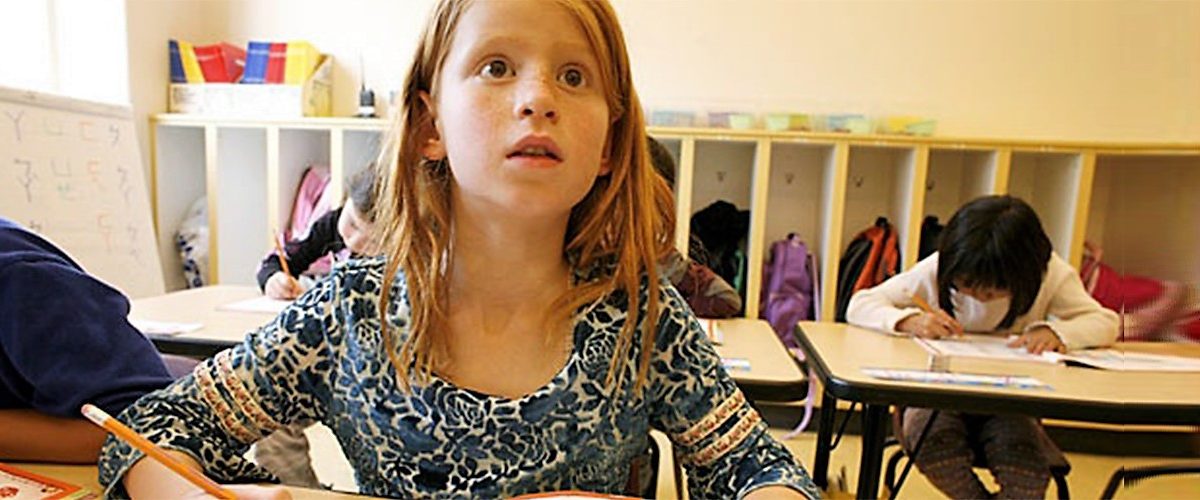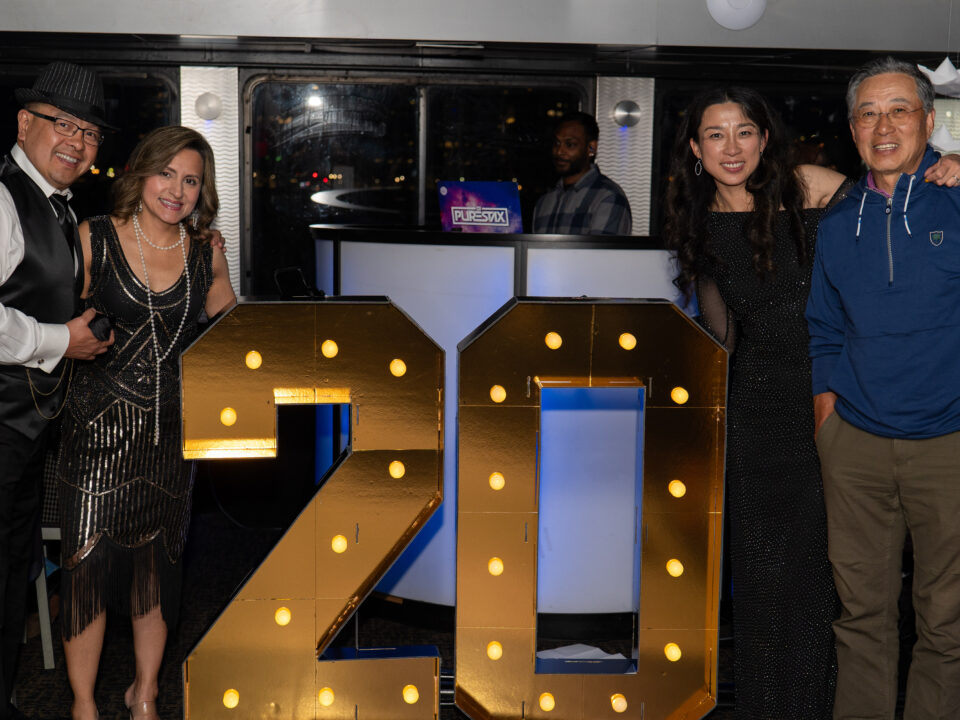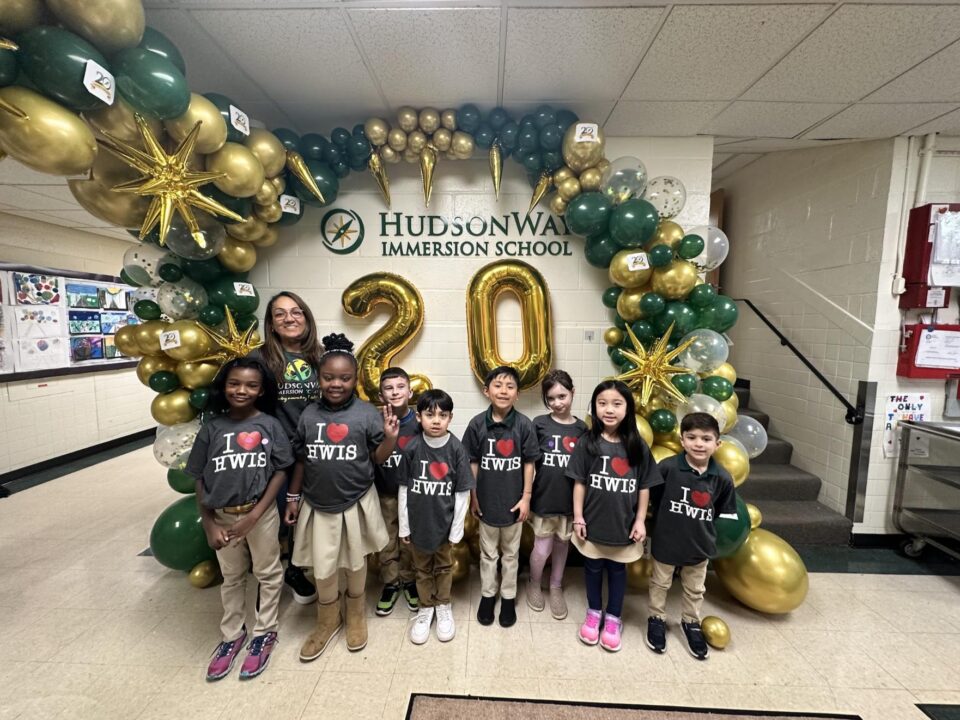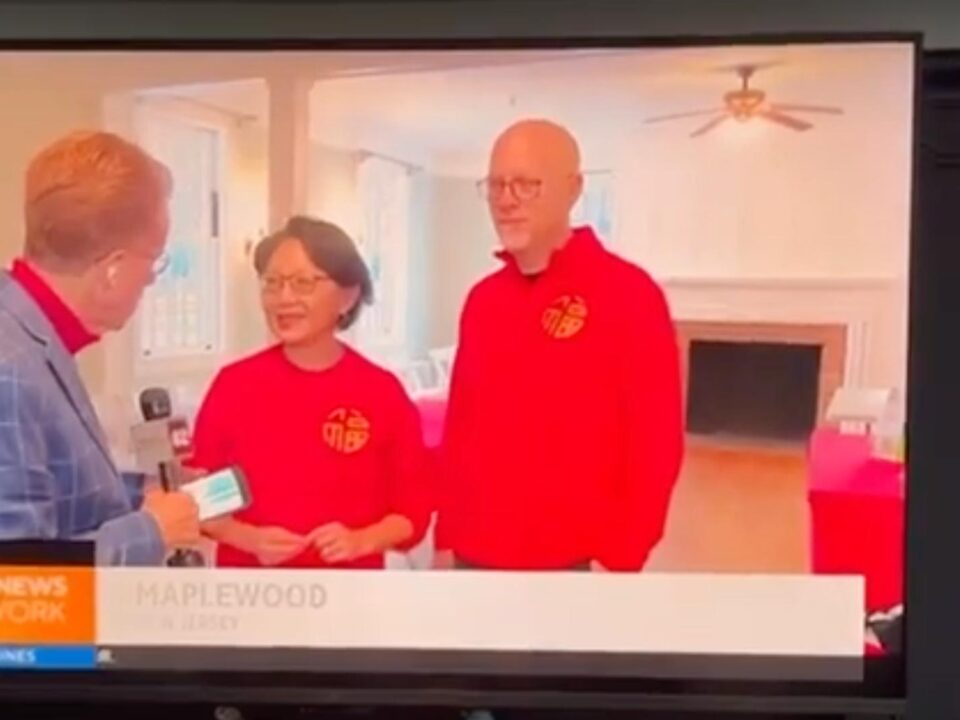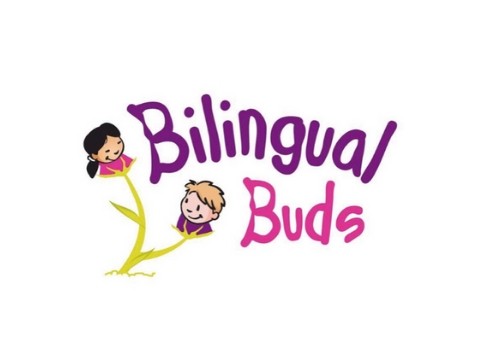
Parents Take Language Class Into Their Own Hands
September 30, 2006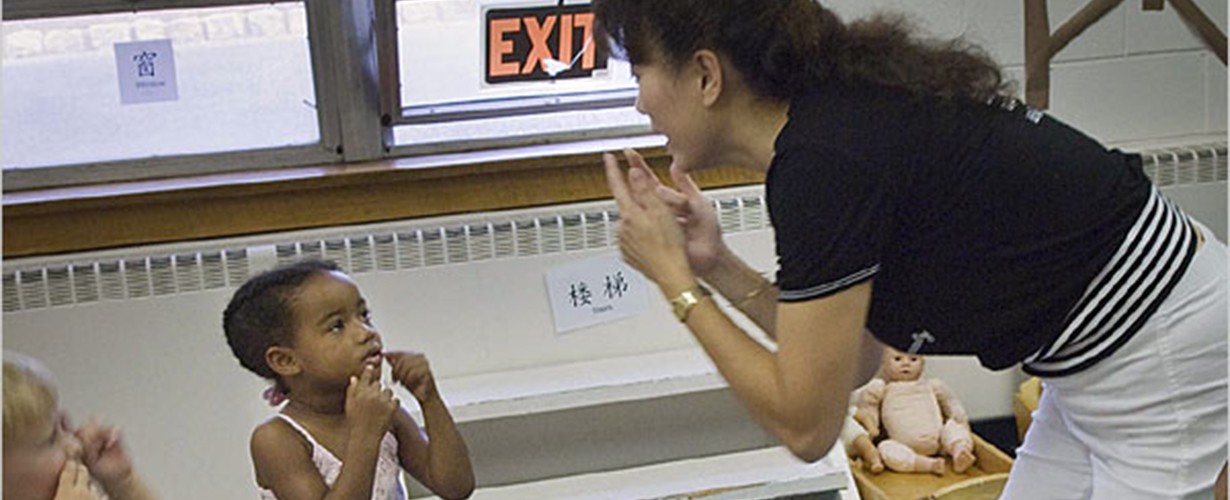
Diversity as Normal as Speaking Chinese
October 7, 2007By Natasha Degen
The New York Times, November 29, 2006
SAN FRANCISCO — With its booming economy and aspirations to expand its global influence, China may have achieved a victory in American classrooms.
Take the private Chinese-American International School here, which runs from prekindergarten through eighth grade and offers instruction in all subjects — from math to music — half in Mandarin and half in English. The curriculum also includes Chinese history, culture and language studies, and in the 25 years since the school was founded, it has attracted mainly Asian-American children. But in the past few years, it has seen rapid growth in the enrollment of non-Asians.
For example, five years ago, the school was 57 percent Asian-American, but this year it is only 49 percent Asian-American, said Sharline Chiang, its spokeswoman, adding that more non-Asian-Americans have been applying in recent years. Andrew Corcoran, the head of the school, said that in the last three to four years, applications from white and Indian-American families have more than doubled, though he declined to give exact figures.
Ms. Chiang also said that this was the first year in which the prekindergarten class had more white children, 36 percent, than Asian-Americans, 32 percent.
School officials attribute the changes largely to a growing awareness of China as a global economic force, and to a strong sense among parents that learning Chinese could help their children professionally. As Mr. Corcoran said, studying Chinese “is looked at as a long-term benefit.”
For similar reasons, Chinese language classes are increasingly popular across the country in public schools. Shuhan Wang, executive director of the Asia Society’s Chinese Language Initiative, who has written about the growth of Chinese language studies in the United States, said several states — including Kentucky, Minnesota, Washington, Ohio, Kansas and West Virginia — were developing curriculums for public schools.
Even so-called heritage schools, which have historically provided immigrant children with Chinese language and culture instruction on weekends and after public school, are gaining non-Asian students. For example, until three years ago, all but five or six of the roughly 120 students at the Chinese School of Delaware were Chinese-Americans who spoke Chinese at home, said Tommy Lu, the school’s principal. This year, nearly 30 students are non-Chinese, he said.
At the Lansing Chinese School in Michigan, also a heritage school, officials saw a wave of new interest about five years ago from American couples adopting babies from China, said Dennie Hoopingarner, the principal, so the school opened a preschool and created a curriculum for children who do not speak Chinese at home. Today, a third of the students, half of them non-Asian, take those classes, he said.
Mr. Hoopingarner said some non-Asian children attended the school because of “an ambitious feeling on the part of the parents” who are “interested in China’s playing an important role in the world.”
Parents are also starting new Mandarin programs when they cannot find them in their communities. Last year, in Livingston, N.J., Sharon Huang, a former marketing executive, founded Bilingual Buds, a Mandarin-immersion preschool, for her twin sons, who are now 3. Ms. Huang, whose husband is not Chinese, started the school in her home with 10 pupils and has since expanded it to 72 pupils and 7 teachers in a rented space in a church. The school is considering adding a kindergarten class next fall, she said.
Judith Carlson, 41, a software consultant who lives in Verona, N.J., pays about $400 a month to send her two-and-a-half-year-old daughter, Victoria, to Bilingual Buds. Mrs. Carlson’s older children, Ryan, 15, and Sarah, 13, have been studying Mandarin at their public school since first grade. The children are now teaching their parents to count to 10 and speak basic words in Mandarin.
“It’s going to be a big advantage for them,” Mrs. Carlson said. “I think no matter what you do in life, if you have some kind of specialty that sets you apart from other people, that makes you more marketable.”
When Mandarin, the official language of China, was first offered in Chicago public schools in 1999, about 250 students enrolled, said Bob Davis, director of the Chicago school system’s Chinese Connections Program. Today, nearly 6,000 public school students, out of roughly 421,000, study Mandarin, he said, the majority black or Hispanic.
“I get calls every day from parents asking how they can get their students in the program, or how their local schools can offer such a program,” Mr. Davis said, pointing out that “the bulk of our students have no background or exposure to Chinese language and culture.”
In Connecticut this year, about 3,000 students, most non-Asian, are studying Mandarin in about 16 public schools, said Mary Ann Hansen of the state’s Department of Education, a 10-fold increase from 300 students in 2004. Another half-dozen schools are considering offering Mandarin for the first time next fall, she said.
About half the teachers for the program come through a partnership with the Chinese government, Ms. Hansen added. Their salaries are paid by their own government, but school districts cover living expenses. “We don’t have enough Chinese teachers locally,” she said.
Michael Patterson, a high school chemistry teacher, has four children — ages 6 to 13 — at the Chinese-American school here. He said the academic program attracted him, but he also noted that “people say Chinese is going to be a pay-off.”
Still, having children at this kind of school can be a challenge for a parent. “We can’t help with homework,” Mr. Patterson said.
Ms. Chiang, the school’s spokeswoman, said parents like Mr. Patterson gamely participated in celebrations like the Mandarin speech festival, public speaking contests in which students read in Mandarin something they have written or an excerpt from a book. “The parents sit and patiently listen,” she said, “supporting their children even though they don’t understand a word.”
The New York Times, November 29, 2006
SAN FRANCISCO — With its booming economy and aspirations to expand its global influence, China may have achieved a victory in American classrooms.
Take the private Chinese-American International School here, which runs from prekindergarten through eighth grade and offers instruction in all subjects — from math to music — half in Mandarin and half in English. The curriculum also includes Chinese history, culture and language studies, and in the 25 years since the school was founded, it has attracted mainly Asian-American children. But in the past few years, it has seen rapid growth in the enrollment of non-Asians.
For example, five years ago, the school was 57 percent Asian-American, but this year it is only 49 percent Asian-American, said Sharline Chiang, its spokeswoman, adding that more non-Asian-Americans have been applying in recent years. Andrew Corcoran, the head of the school, said that in the last three to four years, applications from white and Indian-American families have more than doubled, though he declined to give exact figures.
Ms. Chiang also said that this was the first year in which the prekindergarten class had more white children, 36 percent, than Asian-Americans, 32 percent.
School officials attribute the changes largely to a growing awareness of China as a global economic force, and to a strong sense among parents that learning Chinese could help their children professionally. As Mr. Corcoran said, studying Chinese “is looked at as a long-term benefit.”
For similar reasons, Chinese language classes are increasingly popular across the country in public schools. Shuhan Wang, executive director of the Asia Society’s Chinese Language Initiative, who has written about the growth of Chinese language studies in the United States, said several states — including Kentucky, Minnesota, Washington, Ohio, Kansas and West Virginia — were developing curriculums for public schools.
Even so-called heritage schools, which have historically provided immigrant children with Chinese language and culture instruction on weekends and after public school, are gaining non-Asian students. For example, until three years ago, all but five or six of the roughly 120 students at the Chinese School of Delaware were Chinese-Americans who spoke Chinese at home, said Tommy Lu, the school’s principal. This year, nearly 30 students are non-Chinese, he said.
At the Lansing Chinese School in Michigan, also a heritage school, officials saw a wave of new interest about five years ago from American couples adopting babies from China, said Dennie Hoopingarner, the principal, so the school opened a preschool and created a curriculum for children who do not speak Chinese at home. Today, a third of the students, half of them non-Asian, take those classes, he said.
Mr. Hoopingarner said some non-Asian children attended the school because of “an ambitious feeling on the part of the parents” who are “interested in China’s playing an important role in the world.”
Parents are also starting new Mandarin programs when they cannot find them in their communities. Last year, in Livingston, N.J., Sharon Huang, a former marketing executive, founded Bilingual Buds, a Mandarin-immersion preschool, for her twin sons, who are now 3. Ms. Huang, whose husband is not Chinese, started the school in her home with 10 pupils and has since expanded it to 72 pupils and 7 teachers in a rented space in a church. The school is considering adding a kindergarten class next fall, she said.
Judith Carlson, 41, a software consultant who lives in Verona, N.J., pays about $400 a month to send her two-and-a-half-year-old daughter, Victoria, to Bilingual Buds. Mrs. Carlson’s older children, Ryan, 15, and Sarah, 13, have been studying Mandarin at their public school since first grade. The children are now teaching their parents to count to 10 and speak basic words in Mandarin.
“It’s going to be a big advantage for them,” Mrs. Carlson said. “I think no matter what you do in life, if you have some kind of specialty that sets you apart from other people, that makes you more marketable.”
When Mandarin, the official language of China, was first offered in Chicago public schools in 1999, about 250 students enrolled, said Bob Davis, director of the Chicago school system’s Chinese Connections Program. Today, nearly 6,000 public school students, out of roughly 421,000, study Mandarin, he said, the majority black or Hispanic.
“I get calls every day from parents asking how they can get their students in the program, or how their local schools can offer such a program,” Mr. Davis said, pointing out that “the bulk of our students have no background or exposure to Chinese language and culture.”
In Connecticut this year, about 3,000 students, most non-Asian, are studying Mandarin in about 16 public schools, said Mary Ann Hansen of the state’s Department of Education, a 10-fold increase from 300 students in 2004. Another half-dozen schools are considering offering Mandarin for the first time next fall, she said.
About half the teachers for the program come through a partnership with the Chinese government, Ms. Hansen added. Their salaries are paid by their own government, but school districts cover living expenses. “We don’t have enough Chinese teachers locally,” she said.
Michael Patterson, a high school chemistry teacher, has four children — ages 6 to 13 — at the Chinese-American school here. He said the academic program attracted him, but he also noted that “people say Chinese is going to be a pay-off.”
Still, having children at this kind of school can be a challenge for a parent. “We can’t help with homework,” Mr. Patterson said.
Ms. Chiang, the school’s spokeswoman, said parents like Mr. Patterson gamely participated in celebrations like the Mandarin speech festival, public speaking contests in which students read in Mandarin something they have written or an excerpt from a book. “The parents sit and patiently listen,” she said, “supporting their children even though they don’t understand a word.”


